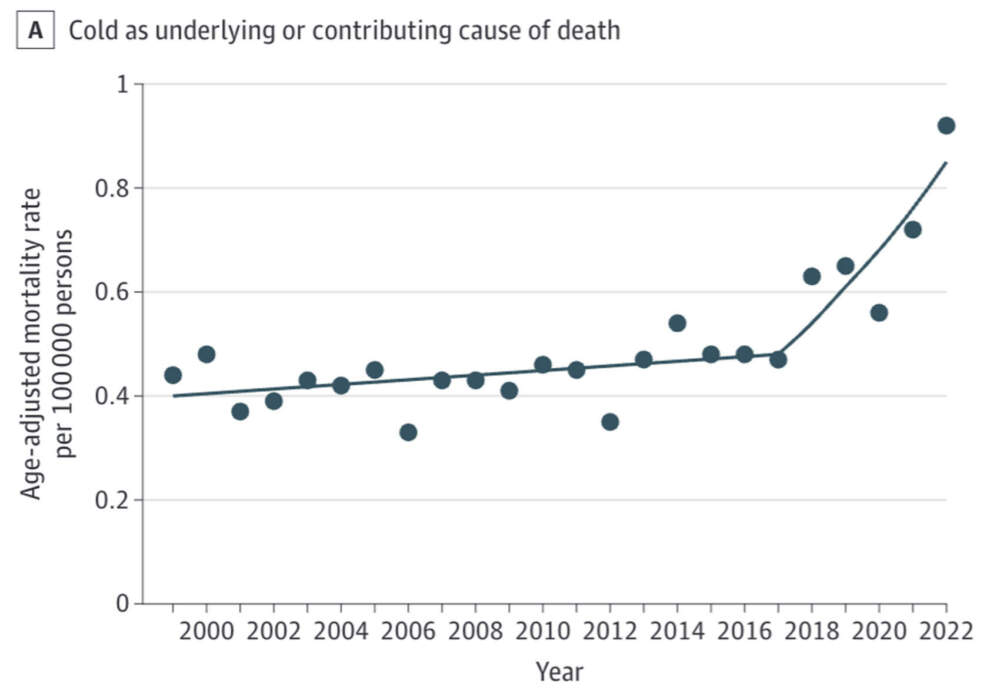Advertisement
While earth warmed, cold weather killed more Americans
Deaths linked to cold shot up dramatically in recent years even as the U.S. set summer heat records and temperatures increased, on average, year-round.
A study of death certificates shows a 95% increase in the rate of cold-related fatalities between 2017 and 2022. The cause of death was often hypothermia, in which a person’s body temperature drops, breathing slows and the heart stops beating.

Study co-author Dr. Rishi Wadhera called the findings “surprising,” but said there are several potential explanations. More Americans lack stable housing. The population of adults aged 50 or older, who are less able to withstand deep cold, is rising. Most young adults report feeling socially isolated. And the timing of the study coincides with a surge in overdose deaths.
“There’s this confluence of social risk factors that are potentially all coming together and contributing at least in part to this rise in cold-related deaths,” said Wadhera, a cardiologist at Beth Israel Deaconess Medical Center in Boston. “But it seems almost unacceptable that in the United State of America that we’re experiencing a rise in cold-related deaths.”
The largest increase in deaths blamed on exposure to cold was among Hispanics. Black, American Indian and people native to Alaska had the highest rates overall. Men were more likely to die from cold than women but both saw significant increases. Wadhera and study co-author Michael Liu said the vast majority of deaths are preventable.
“There’s a rightful focus on understanding heat and the health effects of a warming climate,” said Liu, a student at Harvard Medical School, “but we can’t forget that there’s still a public health crisis of adverse events due to cold.”
The surge in deaths due to cold may seem counterintuitive, but researchers say the U.S. is seeing periods of extreme cold and heat as the atmosphere warms. Some forecasts warn of another unusually cold winter in Texas. Weather models show deeper, more dramatic waves in the jet stream bringing cold air farther south in the U.S. and warm air farther north.
Advertisement
Kristina Dahl said the result is “global weirding” and may play a part in these “alarming” study results. But Dahl, who is vice president for science at the independent research group Climate Central, said economic factors are likely more important.
“If this were purely climate-related, I don’t think we would see this trend of steady numbers through 2017 then five years of an increase in cold-related mortality,” said Dahl.
Dahl said both extreme heat and extreme cold hit the poor and older Americans harder than other groups. She said it would be helpful to take a closer look at death certificates by state to find out what policies or individual weather events might have led to more deaths due to cold.
Dahl and the study authors agreed that some remedies are in place — like housing, heating and cooling assistance — but need more support.
